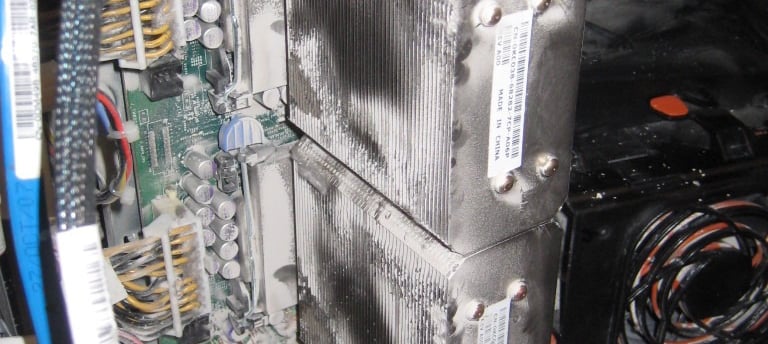Call for a free consultation 1.866.380.1708
Construction Dust in Server Rooms: Risks, Impacts, and Cleaning Solutions
Learn how construction dust affects server room equipment and what IT managers can do to prevent contamination. Discover cleaning strategies and expert solutions.
5/21/20252 min read


Introduction: A Hidden Threat to Critical Infrastructure
Server rooms are the backbone of modern operations, housing the essential hardware that keeps businesses running. But during renovations or nearby construction, a silent and often underestimated threat emerges—construction dust. This fine particulate matter can severely compromise the performance and longevity of electronic equipment.
In this post, we’ll explore how construction dust in server rooms impacts sensitive electronics, what warning signs to watch for, and practical steps you can take to prevent and remediate contamination.
How Construction Dust Contaminates Server Rooms
1. Tiny Particles, Big Problems
Construction activities release a range of airborne contaminants, including:
Silica dust from drywall or concrete cutting
Wood particles from framing and finishing work
Metal shavings from drilling and welding
Insulation fibers from HVAC upgrades
These microscopic particles infiltrate server rooms through air ducts, open doors, or even on clothing—often unnoticed until problems arise.
2. How Dust Affects Electronics
Once inside, dust settles on and inside equipment, leading to:
Clogged air filters and reduced cooling efficiency
Overheating due to obstructed airflow
Corrosion of circuit boards and connectors
Static buildup and short circuits
Premature equipment failure and data loss
These issues not only reduce performance but can also cause costly downtime and data center outages.
Signs of Dust Contamination in Server Rooms
Be alert for these warning signs:
Unusual fan noise or overheating alarms
Decreased airflow in rack-mounted systems
Visible dust accumulation on vents and surfaces
Unexpected hardware failures
If these symptoms appear following construction work, it’s time to investigate potential server room contamination.
Best Practices for Preventing Construction Dust Intrusion
1. Pre-Construction Planning
Before any construction project near your data center:
Conduct a risk assessment with IT and facilities teams
Install temporary physical barriers (plastic sheeting or negative pressure systems)
Seal cable penetrations and unused ports
Schedule high-risk work during off-peak hours
2. Protect HVAC and Airflow Systems
Use HEPA filters in HVAC systems
Inspect and replace filters more frequently during construction
Avoid routing HVAC intake near construction zones
3. Monitor Air Quality
Consider installing air particle sensors in your server room to monitor airborne contaminants in real-time. This allows proactive responses before dust levels become critical.
How to Clean and Restore a Dust-Contaminated Server Room
1. Stop the Source
Before cleaning, ensure the construction source is contained or complete to prevent recontamination.
2. Engage Professional Cleaning Services
General janitorial services aren’t equipped for sensitive electronic environments. Instead:
Hire specialists in cleaning data centers
Ensure technicians are trained in electrostatic-safe cleaning protocols
Use equipment like HEPA-filtered vacuums and ionizing air blowers
3. Conduct Post-Cleaning Verification
Request documentation showing:
Particle count analysis
Before-and-after contamination reports
Recommendations for ongoing monitoring
Why Expert Help Is Critical
Electronics and dust damage can escalate quickly. DIY solutions may only address surface issues, leaving hidden contamination behind. Partnering with a restoration expert ensures a deep, safe, and standards-compliant cleanup.
Conclusion: Safeguard Your Server Room from Invisible Threats
Construction dust isn’t just a cleanliness issue—it’s a serious threat to the integrity of your IT infrastructure. Whether you're planning a nearby remodel or dealing with post-construction fallout, understanding the risks and acting decisively can save you from expensive downtime and equipment loss.
Don’t wait until your servers fail.
Consult with an electronics restoration expert to assess, clean, and protect your server room. Reach out today to schedule an on-site evaluation and keep your systems running at peak performance.

Contact
RescueTech
1.866.380.1708
contact@rtcer.com
© Copyright 2002 – 2025 – RescueTech, Inc
